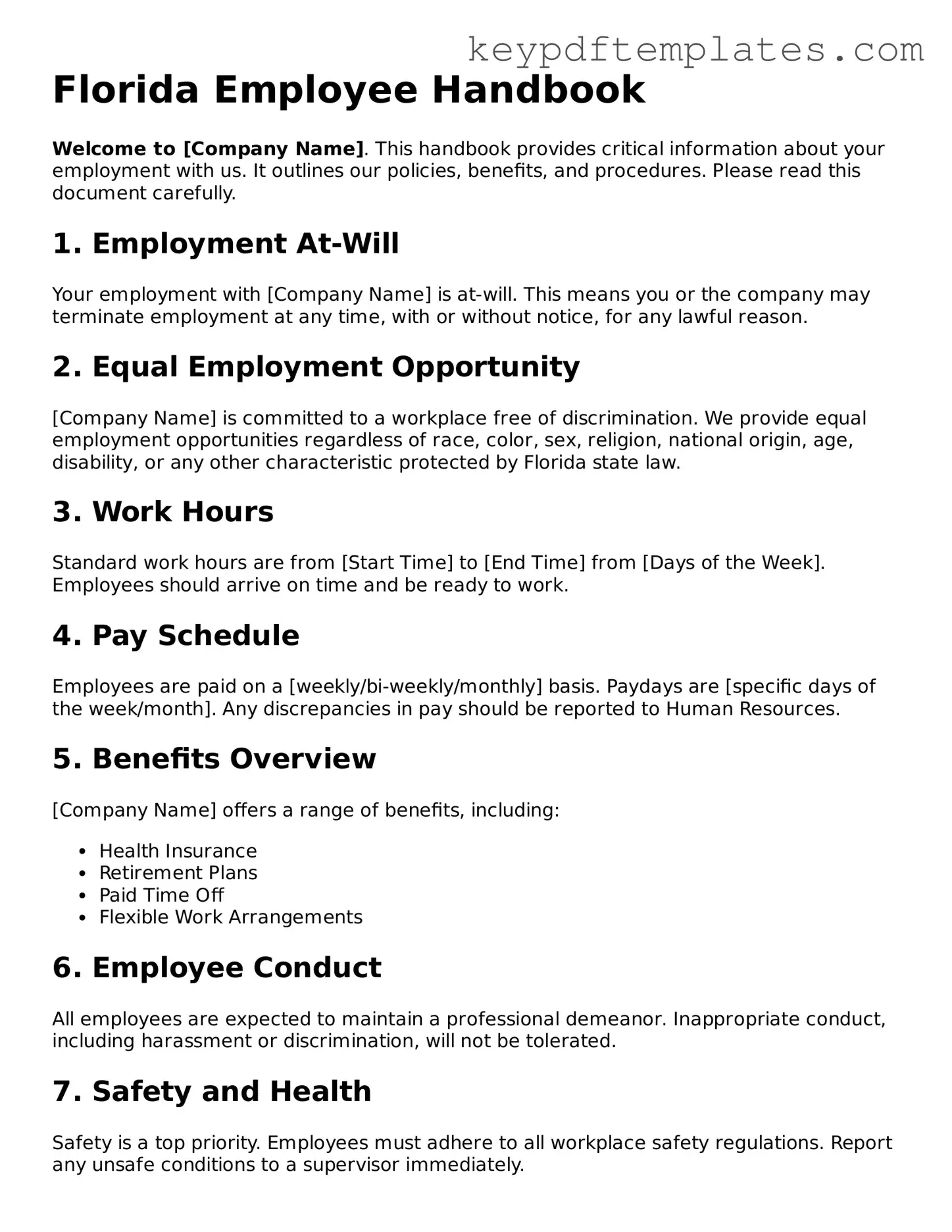Legal Employee Handbook Document for the State of Florida
The Florida Employee Handbook form is a document that outlines the policies, procedures, and expectations of an employer regarding employee conduct and workplace standards. This handbook serves as a valuable resource for both employers and employees, providing clarity on various topics such as attendance, benefits, and workplace safety. Having a well-structured employee handbook can help foster a positive work environment and ensure compliance with state and federal regulations.
Modify Document Online
